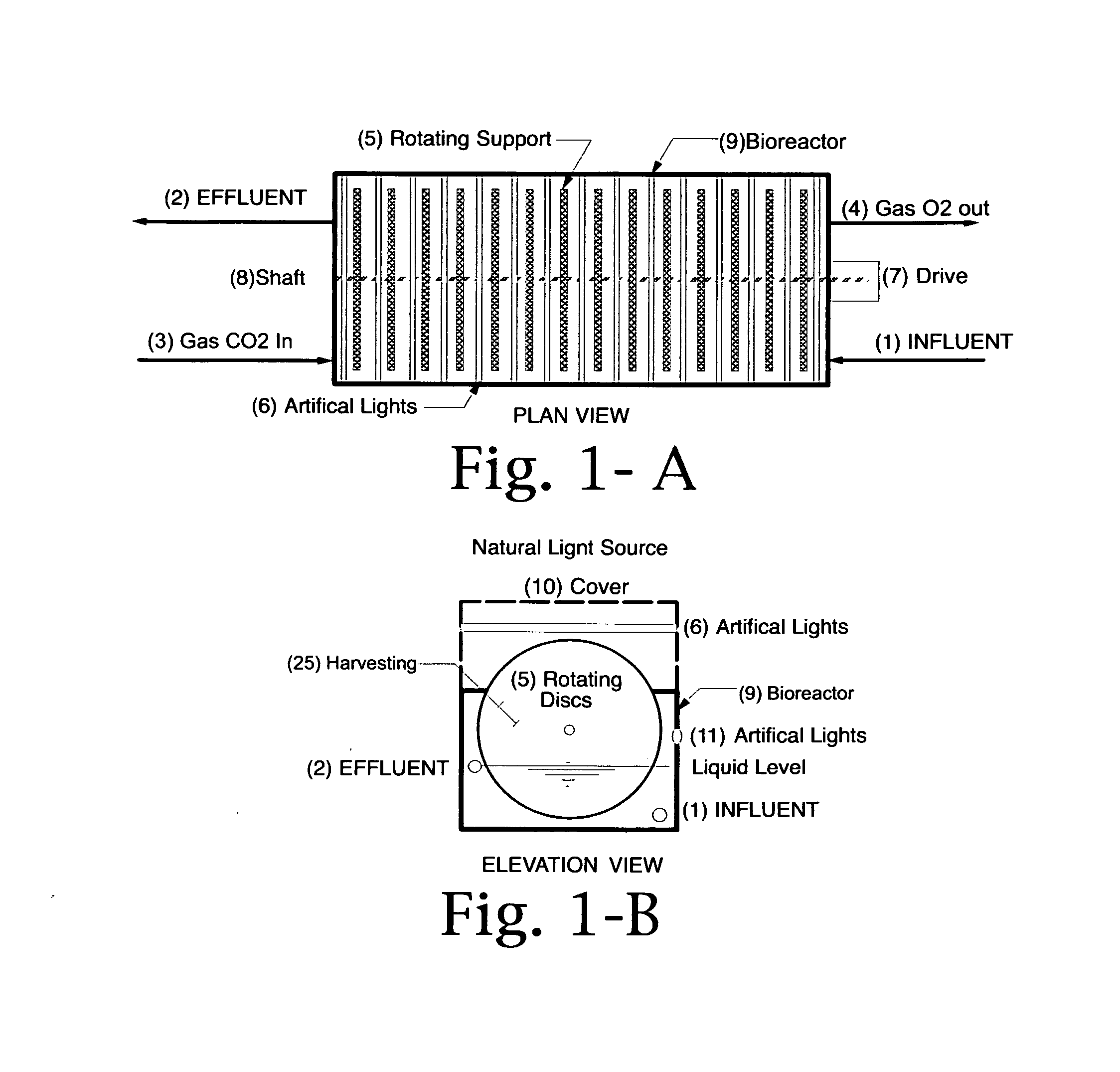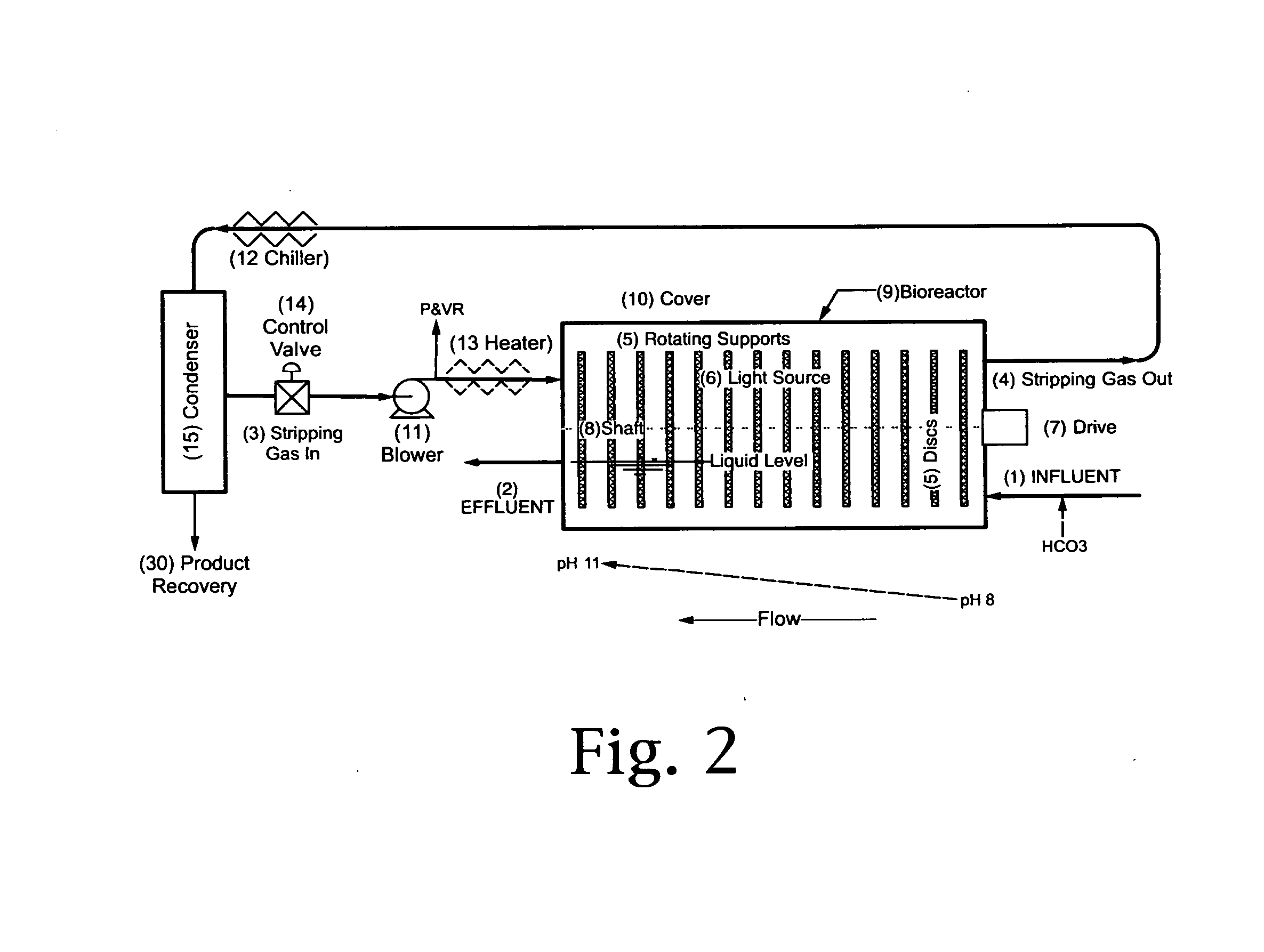Applications of the rotating photobioreactor
a photobioreactor and photobioreactor technology, applied in the field of bioreactors, can solve the problems of ammonia toxic to autotrophs, liquid ph, and use of algae or cyanobacteria, and achieve the effects of high surface to volume ratio (s/v), efficient harvesting of concentrated nutrient-laden biomass, and simple, economical and scalable methods
- Summary
- Abstract
- Description
- Claims
- Application Information
AI Technical Summary
Benefits of technology
Problems solved by technology
Method used
Image
Examples
Embodiment Construction
[0042]The rotating photobioreactor (RPB) is a fixed film reactor upon which autotrophic organisms are grown as a biofilm. A basic schematic of the reactor is shown in FIGS. 1-A and 1-B. It consists of a series of solid or semi-solid rotating plates or discs (5) that support the growth of a biofilm. The photobioreactor can be open or closed, covered (10) or uncovered. It can be mounted in a vessel such as a reactor tank (9), stream channel or water body, waste conveyance channel, etc. The reactor can use natural or artificial light (6). Lighting can be above (6), between (11), or below the rotating discs. The discs are supported on a shaft (8) and driven by any other variety of drives (7) that can impart a rotating movement to the media.
[0043]The media upon which the autotrophic organisms are grown may consist of a variety of substances such as wood, cloth, porous ceramics, glass fiber, carbon fiber, etc. Modifying the topography or roughness of the surface can increase the plate are...
PUM
| Property | Measurement | Unit |
|---|---|---|
| Fraction | aaaaa | aaaaa |
| Fraction | aaaaa | aaaaa |
| Fraction | aaaaa | aaaaa |
Abstract
Description
Claims
Application Information
 Login to View More
Login to View More - Generate Ideas
- Intellectual Property
- Life Sciences
- Materials
- Tech Scout
- Unparalleled Data Quality
- Higher Quality Content
- 60% Fewer Hallucinations
Browse by: Latest US Patents, China's latest patents, Technical Efficacy Thesaurus, Application Domain, Technology Topic, Popular Technical Reports.
© 2025 PatSnap. All rights reserved.Legal|Privacy policy|Modern Slavery Act Transparency Statement|Sitemap|About US| Contact US: help@patsnap.com



